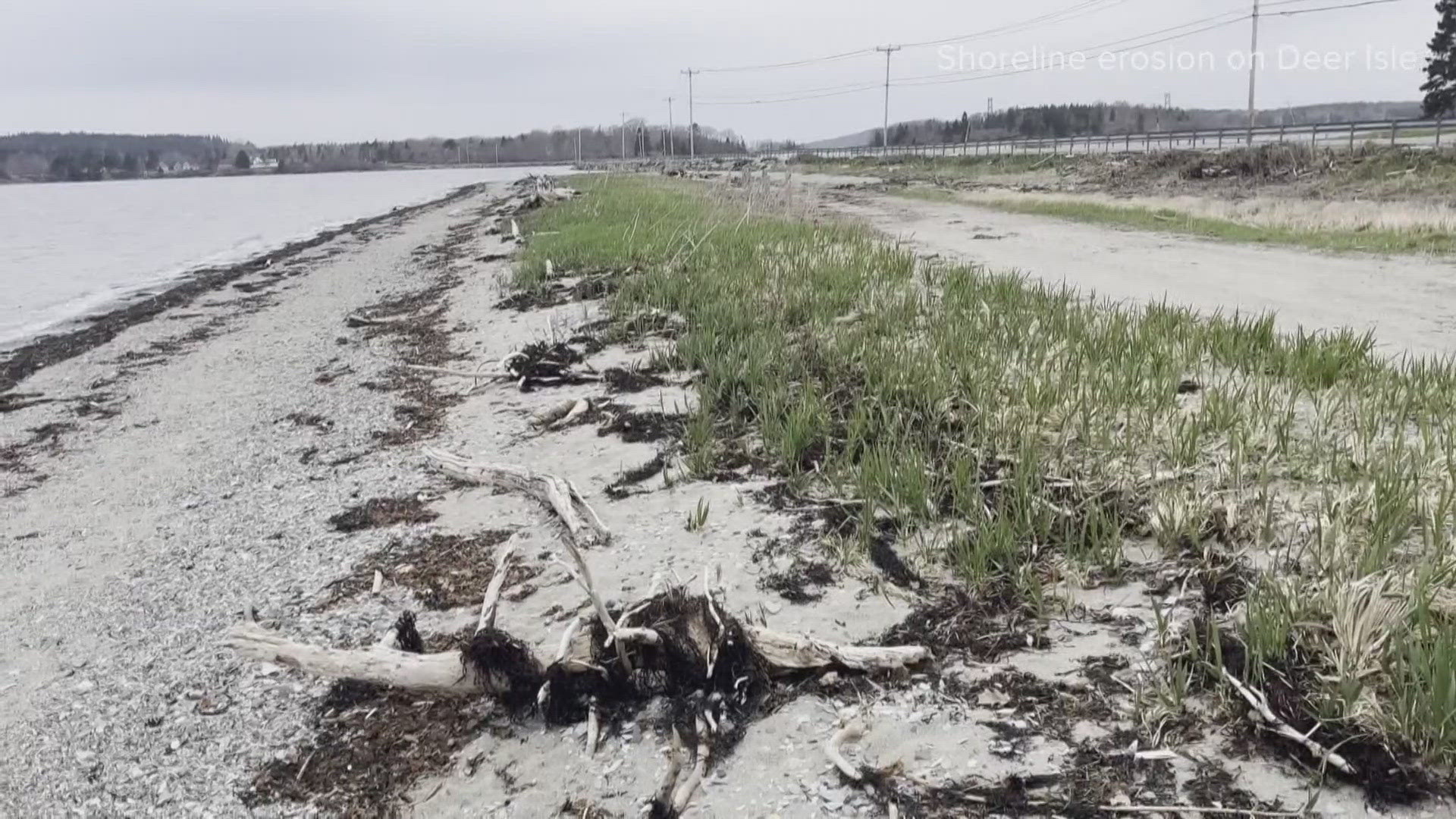ORONO, Maine — Maine's climate is changing and it's affecting the state's diverse environments, including Wabanaki archaeological sites in Acadia.
Acadia National Park recently received $950,000 in federal grants through the Inflation Reduction Act to fund research and case studies of Wabanaki archaeological sites.
Acadia officials said the case studies will help guide their decision-making as they identify ways to protect the sites from a changing climate.
The locations of archaeological sites are kept private to prevent looting or digging at sites, according to Bonnie Newsom, an associate professor of anthropology at the University of Maine and a citizen of Penobscot Nation who's involved in the project. For that reason, NEWS CENTER Maine was not able to visit any of the sites included in the cases studies.
Acadia National Park officials are working with tribal nations on the project, with some 35 archaeological sites eyed for case studies to identify preservation methods.
Newsom said the connection to the land is an important part of Indigenous culture.
"It sustains us," Newsom said. "We have nothing if we don't have the earth and the sun and the water. We depend on that."
She added, "Shoreline erosion and sea level rise and increasing storm intensity is doing some real damage to our coastline, and that includes archaeological sites."
Some of Newsom's students are researching Wabanaki sites, including Olivia Olson, who's doing it for her capstone project. Olson said climate change is changing the wildlife ecosystem and causing water-based species to migrate to cooler waters.
"The (Gulf of Maine) is warming really fast ... faster than a lot of places in the world," Olson said. "There are definitely direct consequences that we can see locally from global environmental degradation."
Newsom said people have to learn how to care about the environment they live in and see it as a place to take care of rather than a place to drain resources from.
"I think that's where Indigenous knowledge can help understand the past better and understand these sites better," Newsom said. "We have a responsibility to this place, and we have to make decisions about how to care for it."
Newsom said she, like many Indigenous people, feel connected to the sites. She said the more you care about something, the better care you provide for it.
"Indigenous peoples lived here for 12,000 years and they weren't faced with some of these climate issues that we are facing today, and much of it is human induced and some of our more contemporary behaviors in the past 500 years have contributed to what we're seeing happen in the climate today," Newsom said. " As an Indigenous person, I often think back and think about how people behaved in the past in ways that were more sustainable. So, if we can use archaeology or oral narratives or other things from the tribal communities to maybe influence our behavior, we may be able to use some of those behaviors or change our behaviors in ways that are more sustainable based on what we know people did in the past."
Eroding coastlines and fierce storms leave artifacts buried at archaeological sites exposed and washed up on coastline shores and leave Newsom fearful for the loss of bits and pieces of history and the land she and others are so connected to.
"When the shoreline erodes along with archeological resources, we lose all that information, and we can never get it back," Newsom said. "We are losing our historic properties and those are non-renewable.
"Once they're gone, they're gone for good."
Newsom said some options being discussed for protecting the sites include installing netting or riprap rock formations. One method Newsom said she believes would be most beneficial is planting rosebuds or other vegetation at various sites. Planting vegetation can help preserve biodiversity, serve as a food resource for local insects and birds, and promote more diverse and resilient ecological outcomes, she said.

